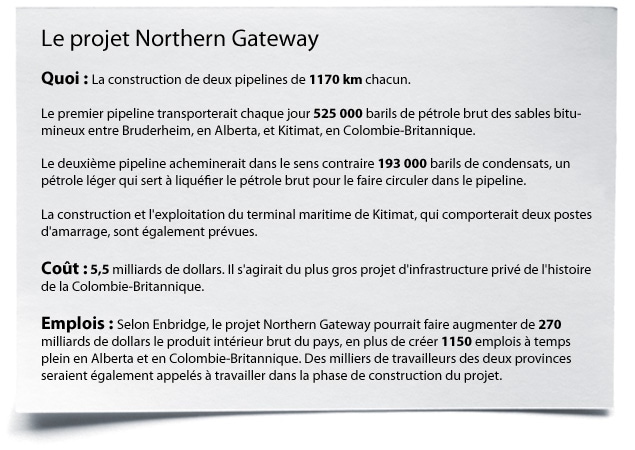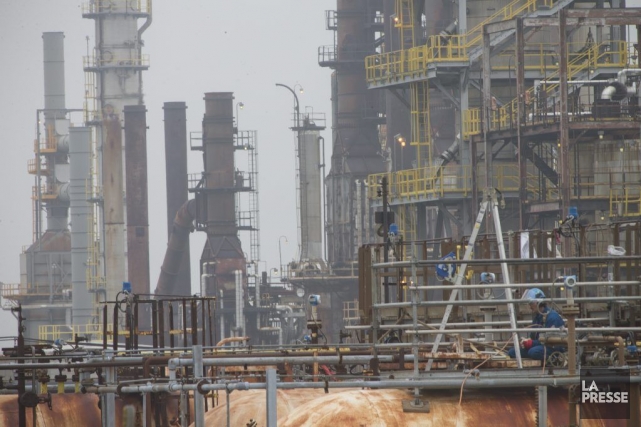Oléoducs Nord Américains
Publié : 23 févr. 2011, 21:29
Une carte interessante des oléoducs Nord Américains.
On y voit les interconnections avec le Canada (et les tars sands de l' Alberta).
Voir aussi Cushing, dont on a parlé dans d' autre topics.
(Gros dépot, est plein en ce moment, ce qui explique l' écart entre le WTI et le Brent).

source The Oil Drum http://www.theoildrum.com/node/7519
et pour Cushing , ville de Oklahoma 8300 habitants :
On y voit les interconnections avec le Canada (et les tars sands de l' Alberta).
Voir aussi Cushing, dont on a parlé dans d' autre topics.
(Gros dépot, est plein en ce moment, ce qui explique l' écart entre le WTI et le Brent).

source The Oil Drum http://www.theoildrum.com/node/7519
et pour Cushing , ville de Oklahoma 8300 habitants :
http://en.wikipedia.org/wiki/Cushing,_Oklahoma....
Cushing is a major hub in oil supply connecting the Gulf Coast suppliers with northern consumers. Cushing is famous as a price settlement point for West Texas Intermediate on the New York Mercantile Exchange[4] and has been cited[7] as the most significant trading hub for crude oil in North America. As of 2007, Cushing holds 5 to 10 percent of the total U.S. crude inventory. Signs made of a pipe and valve on the major highways near town proclaim Cushing to be the "Pipeline Crossroads of the World", and the town is surrounded by several tank farms. Most storage tanks are owned by four entities: oil giant BP, and energy-transport and logistics firms Enbridge Energy Partners, Plains All American Pipeline, and SemGroup Energy Partners. On July 13, 2010, BP announced it will sell its assets in Cushing to Magellan Midstream Partners.[8]
On April 13, 2007, the now-defunct Lehman Brothers released a study which claimed that WTI Crude at Cushing is no longer an accurate gauge of world oil prices.[9] A large stockpile of oil at the facility (mainly due to a Valero refinery shutdown[10]) has caused prices to be artificially depressed at the Cushing pricing point. This gap relative to world markets increased in early 2009 to nearly $12 per barrel at times, causing Saudi Arabia, a leading oil exporter and OPEC member, to announce an end to benchmarking its own oil prices to WTI.[11]
Cushing will be the southernmost hub of the proposed 2,148-mile (3,457 km) Keystone Pipeline that will transport up to 590,000 barrels per day (94,000 m3/d) of crude oil from Hardisty, Alberta to a huge tank farm in Patoka, IL. From there there is distribution to a refinery in Wood River, IL., as well as to the Cushing Hub and then to three refineries in Kansas.[12]
In 2006, with production increases from Canadian oil sands, two pipelines reversed direction, bringing crude into the Cushing Hub, rather than delivering crude from Cushing to oil refineries.
Enbridge’s Spearhead line connects Chicago and Cushing with a 125,000 barrels per day (19,900 m3/d) pipeline.[13]
ExxonMobil’s Pegasus pipeline (with a capacity of 30,000 barrels (4,800 m3) per day) passes through Cushing, connecting Patoka with refineries near Nederland, Tx.,[14]
HistoricallyIn the early 20th century, Cushing was a center for exploration of and production from nearby oil fields. At least two refineries operated in the town. As the oil fields started to run dry, starting in the 1940s, production and refining became less important. However, the maze of pipelines and tanks that had been built led to the NYMEX choosing Cushing as the official delivery point for its light sweet crude futures contract in 1983.



